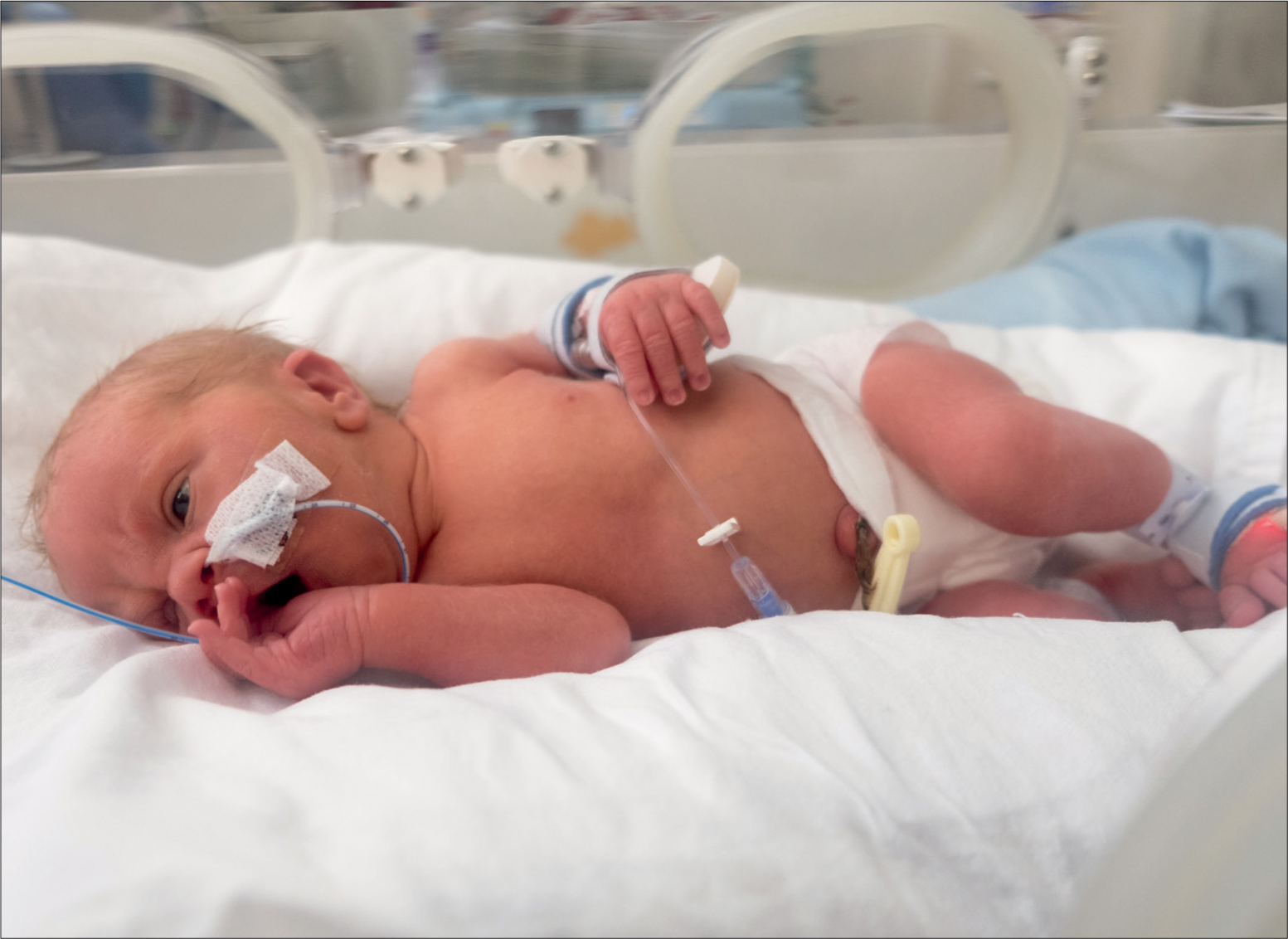In the second article of my series exploring neonatal topics relevant to the midwife, I'd like to discuss the contemporary topic of neonatal transitional care (NTC). This is an area of particular interest for me after working with midwifery and medical colleagues in NHS Greater Glasgow and Clyde to develop an educational resource for staff preparing to work within their newly established NTC environments. However, I use the term ‘contemporary’ loosely as it is not a new concept, having been discussed within a Midwives Chronicle article entitled ‘Moving forward in neonatal care’ over three decades ago (Whitby, 1983).
Fast forward to 2017 and the British Association of Perinatal Medicine ([BAPM], 2017) reaffirmed the importance of NTC within their framework for practice, outlining an approach to supporting babies with care needs beyond that of normal newborn care, with the aim of both preventing unnecessary admissions to the neonatal unit and, more importantly, avoiding separation of mother and baby. In addition, it is also suggested that NTC should be considered ‘a concept, not a place’ (McKeon-Carter, 2018), shifting the position that a distinct clinical environment is always required to deliver this level of care. From a policy perspective the ‘Better births: improving outcomes of maternity services in England. A five-year forward view for maternity care’ (NHS England, 2016) doesn't explicitly discuss NTC but commits to a dedicated review of neonatal services, while the ‘Best start: a five-year forward plan for maternity and Neonatal Care in Scotland’ (Scottish Government, 2017) goes some way further, explicitly recommending the development of postnatal neonatal care while recognising the BAPM guidance that was due to be released at the time of its publication.

So, let us first consider the dimensions of NTC. A good starting point is the BAPM position that it is care additional to normal newborn care (NNC) (BAPM, 2017). This NNC is provided by the mother in a postnatal environment (hospital or home), supported by a midwife, and may include care activities such as enhanced monitoring (newborn early warning trigger and track or equivalent), blood glucose assessment and bilirubin screening to name a few. Further to this, BAPM also proposed the following definition for NTC:
‘Neonatal transitional care (NTC) is care additional to normal infant care, provided in a postnatal clinical environment by the mother or an alternative resident carer, supported by appropriately trained healthcare professionals.’
They also provide clear criteria which helps to identify that this level of neonatal care can arise from birth, following a period of care in a postnatal ward or as part of the process of ‘stepping down’ care from the neonatal unit, allowing the mother and baby to be prepared and supported for going home. An example of some of the BAPM criteria for the admission to, and support within, a transitional care setting includes:
These are only a selection of the criteria identified and I would strongly encourage you to review this framework in full and consider how this might be incorporated or applied within your maternity and neonatal services.
Let me now highlight what I believe to be the key principles of NTC, in particular how it can benefit the baby, their family and the wider multi-professional team, and then conclude with my thoughts on what it is not designed to offer.
The primary purpose and focus is to safely keep mothers and babies together; providing support for the development of positive early attachment, facilitation of successful and effective breastfeeding where this is the mother's choice, and supporting the principles of family-centred care (Yu and Zhang, 2019). It provides the clinical team with an additional service delivery option to ensure care is delivered in the right environment, supporting the efficient use of neonatal cot capacity for both admissions and discharges. Additionally, it facilitates collaborative working between midwives and neonatal staff to prepare parents for the needs of their baby, developing their self-efficacy and reducing the risk of readmission following discharge home.
In terms of what NTC is not, it isn't something new as we have been doing much of this already within our standard postnatal environments but this is not always recognised, resourced or supported appropriately. It should not be viewed as a something separate from existing maternity and neonatal services, a cost-cutting exercise or ‘watered down’ neonatal care but seen as an opportunity to bring these components of care delivery together in the best interests of babies and their families. And finally, it is also not just another thing for midwives to add to their already growing postnatal workload and responsibilities but a means by which we can identify those eligible babies to ensure they receive the care they require by midwives who are educated, prepared and supported to deliver, in partnership with neonatal colleagues.
Although there are many examples of excellent NTC throughout the UK and beyond, I fear it may have fallen into the same ‘fairytale’ category as our existing postnatal services. However, with appropriate recognition, education and resourcing, it has the potential to deliver transformative care to the women and families we support within our maternity and neonatal services.


